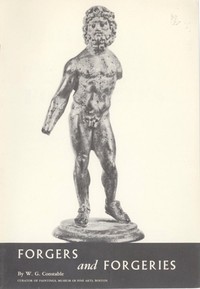| Summary |
"Forgers and Forgeries" by W. G. Constable is a comprehensive examination of the art of forgery, delving into both the motivations behind forgers and the methods they employ. Written in the mid-20th century, the book serves as both a historical account and an analytical study of forgery in art, discussing the complexities of misrepresentation and the intricate dance between art and deception. The likely topics covered include notable forgers and their infamous works, as well as the methods used to detect forgeries, contextualized within the shifting landscape of art collection and appreciation. In this book, Constable traces the evolution of forgery from ancient to contemporary times, highlighting the financial and intellectual motivations that drive individuals to create false artworks. He provides compelling narratives of historical figures such as Giovanni Bastianini and H. A. Van Meegeren, whose forgeries captivated the art world despite their fraudulent nature. The author emphasizes the dual roles of forgers as artists in their own right and as challenges to the traditional art community, while also exploring the advancing techniques used by experts and scientists to identify forgeries. Ultimately, "Forgers and Forgeries" offers readers a thought-provoking insight into the delicate line between authenticity and deception in the world of art. (This is an automatically generated summary.)
|

